History
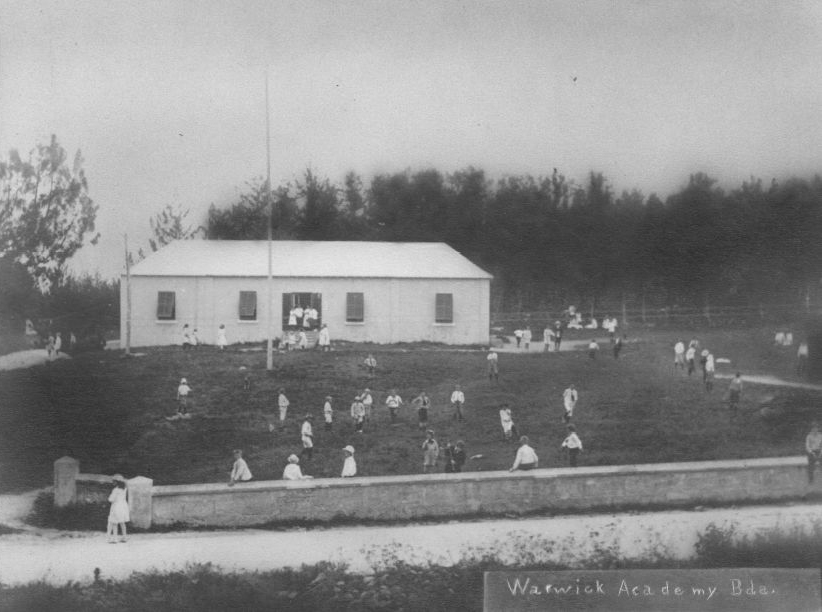 Comparatively, little is known about the early years of the school’s history as the historical records, along with those of Warwick Parish Vestry, were lost at sea in 1929. Mr. James Firth, who had possession of the records, was the purser of the vessel Fort Victoria that was rammed and sunk off New York Harbour when the ship was making a regular run to Bermuda.
Comparatively, little is known about the early years of the school’s history as the historical records, along with those of Warwick Parish Vestry, were lost at sea in 1929. Mr. James Firth, who had possession of the records, was the purser of the vessel Fort Victoria that was rammed and sunk off New York Harbour when the ship was making a regular run to Bermuda.
There seems to be little doubt, however, that the first buildings were on land donated by the Riche Family (Earls of Warwick). Mr. Richard Norwood, an outstanding mathematician and navigator, was the first Headmaster but only for a very short time as there were difficulties in agreement over salary, and in about 1659 the Rev. Jonathan Burr took over.
Burr undertook to teach, “writing, ciphering (arithmetic) and Latin for nothing, and navigation for a fee” but was unsuccessful and Norwood returned. However, there were still financial problems owing to lack of support and Norwood could not agree with his ushers or assistants.
The East India Company had decided that a learned schoolmaster was one of the greatest needs of the colony, as at least one-third of the men could not even write their own names and others were educated only to the most elementary level.
It was agreed that ‘an inoffensive man’ should be found for tutoring in each parish but the Company, realising that funds would not allow for one in each parish, decided on one in the Chapel in the ‘over plus’ (the land left over as common land after Norwood’s division of the islands into shares) and another at the Warwick school lands. The Company sent a letter in November 1663, requiring that the person taking over the Warwick School should build two rooms of stone measuring 14’ by 16’, undoubtedly the beginning of Warwick Academy proper. The outline of these rooms, visible in the present school building, corresponds to the dimensions of that original structure.
Education in the colony in the late seventeenth century and eighteenth century was reduced to the levels of reading, writing and arithmetic. The clergy were urged to help and added a little Latin - to people who were barely literate. At the beginning of Governor Bennett’s term in 1701, members of the House of Assembly were scathingly described as having “privateering principles and a Bermuda education.” The low standard is hardly surprising when the payment of the schoolmaster, who was also the Attorney General, was a meagre £4 a year.
It was not until the nineteenth century that the situation began to improve, spasmodically depending on the caliber of the Headmasters and their length of service. One of the most outstanding was Mr. Hugh Houston, Headmaster from 1853 - 1883, who was renowned as a fine scholar and a good teacher. His school was attended by boys from all over the colony, amongst them several who are well remembered: The Reverend Dr. Francis Landy Patton, later the President of Princeton University; Mr. Walter Thorburn, a Judge in the Supreme Court in Calcutta; and Sir James Hodson, a surgeon of repute in Edinburgh.
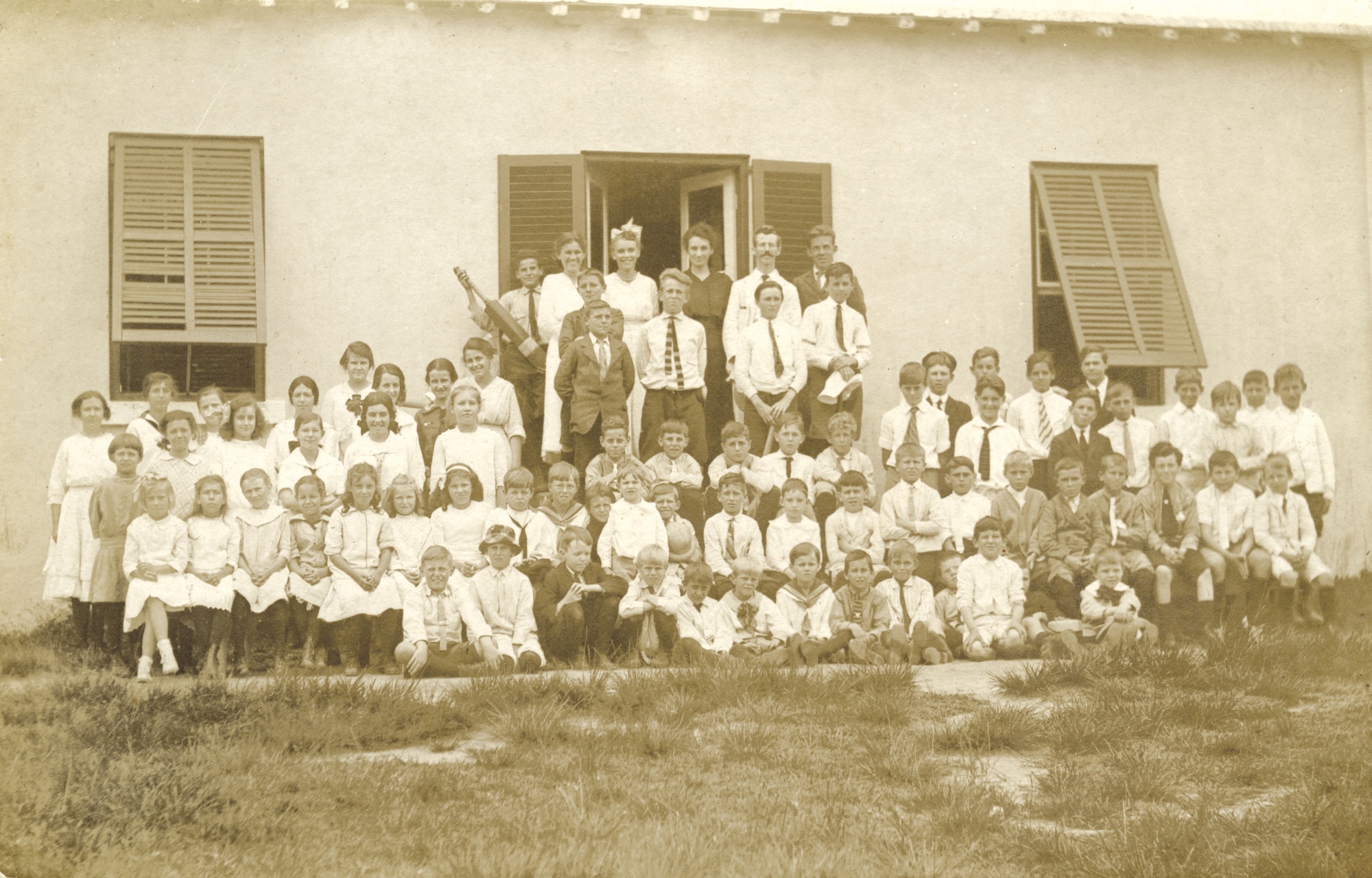
It was not until the twentieth century, however, that the school embarked on the programme of expansion of physical facilities, which still seems to be in process. One of the earliest benefactors was Mr. James Morgan of Montreal, who owned property in Warwick Parish. His generosity (1918-1928) made possible the extension of buildings round a quadrangle area, which still remains the heart of the school. In addition, there was an assembly hall, Morgan Hall, and a well-equipped science laboratory.
Morgan, Dr. Francis Landy Patton and the Hon. A.B. Smith were also responsible for another action of far-reaching importance for Warwick Academy. They presented a petition to the House of Assembly which brought about the passing of an Act of Parliament - The Warwick Academy Trust Act (1922) from which time the school has functioned with its own Board of Governors, first meeting in January 1923, and from which date school records are still retained intact. The 1922 Act was rescinded in 1982 and replaced by the Warwick Academy Act 1982.
The Headmaster at that time, Mr. R.C. Robertson (1895 - 1928, with a six-year break in Canada) saw six of his students awarded the Rhodes Scholarship. During the years 1912 -1918, while Mr. Robertson was in Canada, the school was blessed with another good headmaster, Mr. W. G. Waddington, M.A. His advertisement in the Royal Gazette contained the usual curriculum offered, and “special terms for those coming from Hamilton - hot dinners during the winter months.” Major W. B. Welch (1929-1940) was the first headmaster to enjoy the Headmaster’s House (now Kimball Lodge) at the Northern end of the school lands overlooking Hamilton Harbour. Many of today’s prominent professional and business people received their education at the Academy at this time.
Academic standards in general, however, were not high and Mr. W. S. Blake, headmaster for four years (1943-47), complained at the first Board of Governors Meeting that standards were low, facilities seriously lacking, syllabuses non-existent and records incomplete. He introduced student records cards although they were often very sketchily completed.
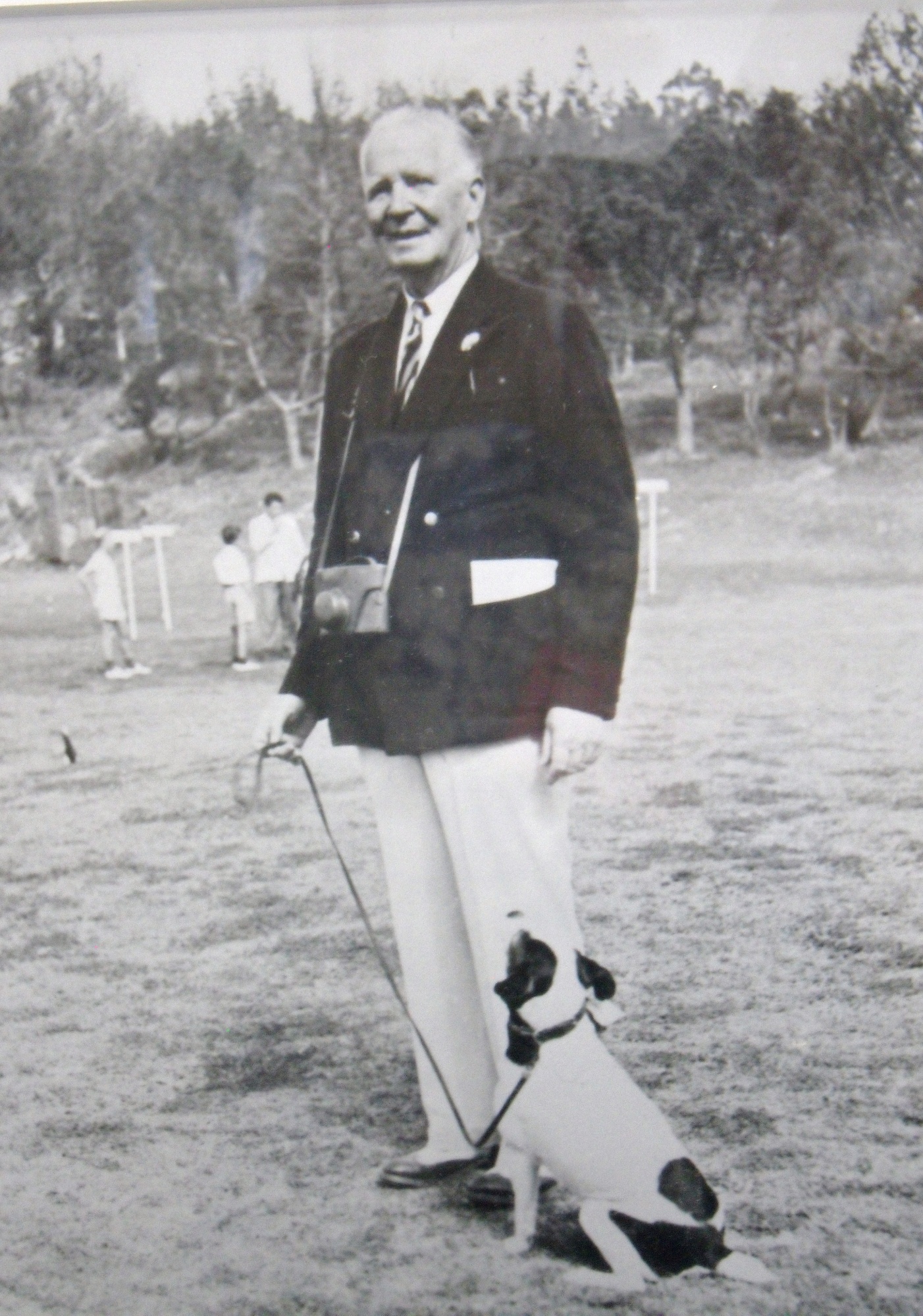
Mr. George Perkins, headmaster (1947-53), began the academic development of the school, its students numbering 225 in December 1947. Owing to the generosity of Mr. W. S. Purvis, additional classrooms and cloakrooms were added in 1949.
By 1950 enrolment had reached 275 and parental interest was marked by a revitalisation of the Warwick Academy Association of parents, old pupils, and teachers. This Association began to take an active part in school affairs.
The school curriculum catered for an ‘A’ stream, which took the Cambridge School Certificate, while other students took commercial and business training. In September 1953, Mr. G. G. Lamacraft became Headmaster and was in office for nineteen years. It was during this time that the school’s reputation for high academic standards was firmly established, and school enrolment steadily increased. There were many major changes and a great increase in school facilities, especially for the Science Department. In 1962, the 300th anniversary of the founding of the school, the Phoebe Purvis Memorial Hall (PPMH) was built in tribute to the continuing generosity of Mr. Purvis. Also, 1962 was a celebration year as the governors decided on an important change of policy. Warwick Academy, traditionally a school for white children, opened its Secondary Department to all children, the first of the traditionally white schools to do so. Two black children qualified in the entrance examinations but unfortunately neither took up the offer and it was not until 1963 that the first black child attended. The school is now completely integrated.
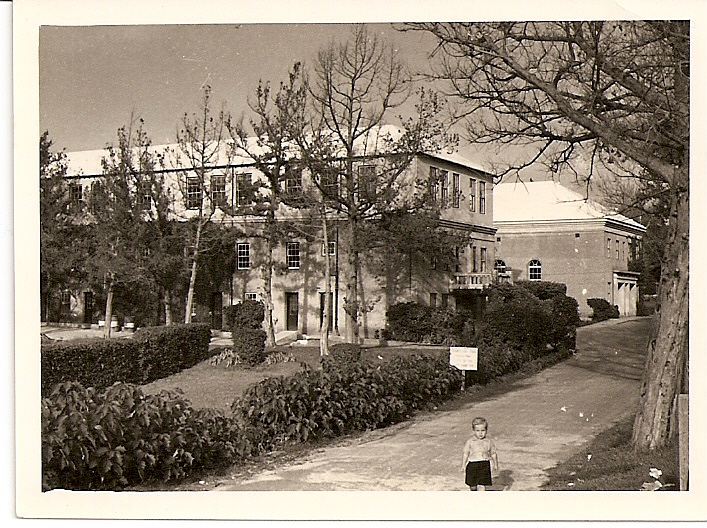 In 1967, the school regretfully parted with its ‘A’ level Sixth Form when the Government decided it would be more economical to concentrate all ‘A’ level teaching at a single Sixth Form Centre.
In 1967, the school regretfully parted with its ‘A’ level Sixth Form when the Government decided it would be more economical to concentrate all ‘A’ level teaching at a single Sixth Form Centre.
In 1971, there was a further blow to tradition when Government amalgamated several small Primary Schools, and the Primary Department at Warwick Academy was one of the first to go. Needless to say, with the Secondary Department expanding first to a three-stream and then to a four-stream entry, the space was rapidly taken up and soon the school was once more filled to over-flowing. An ‘infant’ Music Department, begun at this time, is now flourishing.
When Dr. Joseph M. Marshall was appointed Headmaster in 1972, Warwick Academy operated as a typical British grammar school. However, his experience as an educator in North America led him to introduce a more liberal programme, without sacrificing academic excellence, and these changes have gradually been taking place. Expansion, both in the academic and recreational spheres, has been achieved at a steady rate. Two hard surface tennis courts were built in 1974. The building housing the Science laboratories, Food, Nutrition and Needlework rooms was completed in 1975 and is the envy of many schools. In 1981, following extensive fund-raising, a very real need was met when a 25-metre swimming pool was completed. The earth excavated in the pool was utilised to level off an area, which is now an outdoor basketball court.
There have also been valuable additions to the staff room and there can be few schools with a more cosmopolitan and global in the make-up. Bermuda, Canada, England, Scotland, Wales, Ireland, and the USA, are all represented by members of staff, and this helps to provide the students with a well-rounded education.
Changes in the system of public education involved the loss to the school of both its Sixth Form and its Primary Department. From then until 1992 Warwick Academy developed as a four-form entry, 11 to 16 selective, co-educational, racially integrated, Secondary School. Student enrolment climbed to nearly 500.
In 1989 the Ministry of Education announced its intention to abolish the secondary school entrance examination and to establish a comprehensive educational system of primary, middle and senior secondary schools. As a consequence of Warwick Academy’s being designated one of the new middle schools, the Board of Governors announced in June 1990, that Warwick Academy would become a private 5 to 16 school from September 1992.
Later, the Board agreed to Government’s demand to delay the priviatisation of the Secondary School until September 1995. Meanwhile, a fee-paying Primary School was started in 1992, with one class in Year one and one in Year two.
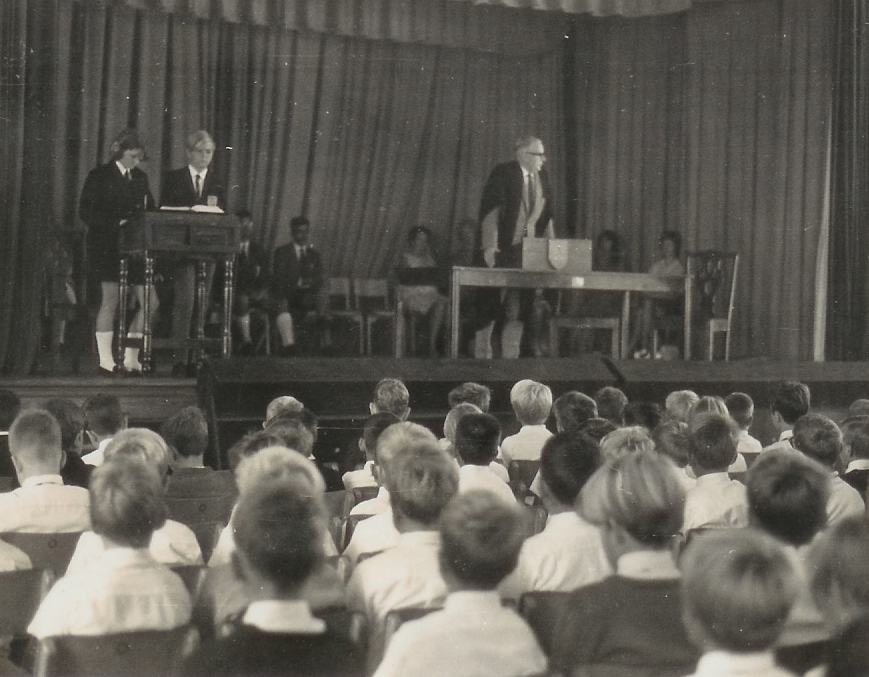
Since becoming private again, the school has had four Heads of School in Headmaster Mr. Bernard Beacroft, (1988 - 1997), Headmaster Mr. Robert Lennox (1997 - 2008), Principal Mrs. Margaret McCorkell, (2008 - 2016), and Principal Mr. David Horan (2016- ) who is currently in post. With Mrs. McCorkell’s appointment the school adopted the term Principal to replace Headmaster.
Warwick Academy is now an International Baccalaureate Organisation (IBO) World School and an accredited Council of International Schools (CIS) member school catering to students from Reception Year through to Year 13. In its present state Warwick Academy is organised into a Primary School, with a Head of Primary and including a Reception Year, and a Secondary School, with a Head of Secondary and including a Sixth Form. It offers an Early Years Programme, the International Primary Curriculum (IPC) and UK National Curriculum from Years 1 to 9, the IGCSE in Year 10 & 11 and the IB Diploma Programme, IB Individual Subjects, IB Career-related Programme, and British & Technology Education Council (BTEC) subjects in Year 12 & 13 (the Sixth Form). In addition, the school has vibrant Music, Drama, Sport, and Community Service programmes and offers a variety of additional co-curriculars. It is now solidly established as a successful, happy, integrated establishment maintaining high academic standards and offering a holistic education as good as anywhere in the world.
Since privatisation the school has been on a steady path of growth. In 1999 Barber Hall, a renovated school-owned residential property, was designated for the return of a Sixth Form. Initially AS levels were offered and then in 2003 Warwick Academy became certified as a full-fledged International Baccalaureate Organisation World School offering the IB Diploma Programme. This lengthened the academic programmes on offer with students staying at the school until 18 years of age, graduating directly to Universities and Colleges in the United Kingdom, United States, Canada, and many other countries around the world.
In May of 2005, a fine full-size Sports Hall was opened, with new bathrooms, changing rooms, and a re-vamped swimming pool (now heated). This new building replaced the old gymnasium, now refurbished as a Drama Studio. In addition, there were three new classrooms and an expanded Design & Technology workshop, as well as storage for the main hall, the PPMH. The Sports Hall was later named the Nancy Smith Sports Hall.
The PPMH itself was renovated in 2008 to improve its accommodation for Performing Arts events, such as music concerts and drama productions, which were becoming a prominent feature at Warwick Academy.
In 2012 the school celebrated its 350th Anniversary with a Gala Reception that included musical and dramatic performances by popular alumni. In the same year, Warwick Academy was proud to become a Human Rights Friendly School, recognizing the privations of unrepresented and oppressed people.
In 2015 the decision was made to move the main Secondary School intake from Year 7 to Primary Year 5, increasing it to three classes (streams) in 2016.
The Board of Governors recognized the need to offer a Reception Year programme, moving the school starting age one year earlier, in line with other private schools. In September 2016, 32 students aged between 4 and 5 were admitted in a new Reception Year facility housed in Cambrae Cottage, a renovated residential property next to the Sixth Form’s Barber Hall.
In 2017, under the new Principal, Mr. Horan, Barber Hall saw an improvement when a campaign to raise funds to honour former Principal, Mrs. McCorkell’s, long service to the school resulted in the McCorkell Commons, an airy and brightly furnished common room for students, and an additional event space. By this time, Sixth Form students had another pathway to their further education goals when British & Technology Education Council (BTEC) subjects were added to their options, the first school in Bermuda to offer this vocational option. Then in 2022, an additional IB Careers-related Programme was added, then finally, in 2023 a Dual Enrolment option with the Bermuda College, allowing Sixth Form students to choose one of four pathways.
In November 2017, the swimming pool was named, with much pomp and circumstance, the Flora Duffy Swimming Facility, to recognise World Champion and, in subsequent years, Olympic gold triathlon status achieved by alumna Flora Duffy.
In May 2019 the parking lot, used by Lindo’s Foods and owned by the school, was sold to Lindo’s with part of the funds used to purchase Houston House, increasing the northern cluster of houses owned by the school to five. The intention with the Houston House purchase was to commercially rent the property, with the revenue used to grow the endowment.
During this growth phase staffing was added to support Learning Enrichment in both the Primary & Secondary Schools, housed in purpose-built facilities in each. In another first, Warwick Academy achieved accreditation with the ‘gold standard’ Council of International Schools (CIS) in May 2020.
From May 2020, education at Warwick Academy pivoted during the Covid pandemic, due to the forward thinking of the Principal, the Information Technology Department and the teaching staff who made the resources available to students for virtual learning. Unfortunately, the social, music, drama, and sporting side of the school’s programme suffered due to Bermuda’s necessary restrictions and regulations.
The school opened its Marine Science Facility in late 2020, recognising the huge advantage of having the waterside property on Harbour Road. The facility was again the result of fundraising and the assistance of various Bermuda marine and ecological organisations, such as BIOS, and will allow students of all ages the opportunity to study marine flora and fauna, tidal changes, to record statistics and carry out surveys and experiments associated with Bermuda’s marine environment.
Post the world-wide Covid pandemic, the school returned to normal programming and by 2023, all co-curricular activities had been reinstated and other interests, such as ecological and horticultural clubs, were added to the list. Specialist swimming and football coaching, in addition to the regular class sports activities, was launched for those with interest and ability, in line with the Warwick Academy’s ethos of establishing for Bermuda progressive and well-rounded programmes that build resilient and innovative students.
February 2023, the Science Department saw the opening of the STEM Collaboratory supported by lead donors, Mr. Elliott & Mrs. Gail Rogers, to complement Science, Technology Engineering and Mathematics teaching. This was an exciting addition for students of all ages, who embraced the activities with fervour including augmented reality, virtual reality, robotics, electronics, coding, remote operated vehicles, etc.
During the 2023/24 academic year, we were fortunate to expand our Secondary School facilities with the addition of a new classroom, enabling the introduction of astronomy.
We also celebrated the completion of the Hunter Pavilion in September, strategically located between the Tucker-Franco Field (top field) and the bottom field. This versatile space is a valuable enhancement to our campus, providing equipment storage, a viewing deck, restrooms, and a fully functional kitchen.
At the time of writing Warwick Academy’s student population has risen to 863 students ranging from 4-18 years old with the staffing complement having grown to 128 all accommodated on its wonderful 22-acre property and housed in 125,000 square feet of buildings and facilities.
Warwick Academy - Founded in 1662 - “Quo Non Ascendam”
Written and revised by Geoffrey Lamacraft, Beryl Eldridge, Joseph Marshall, and Joan Shadbolt.
Want to learn more about Warwick Academy’s remarkable heritage?
Click below to explore the past of Warwick Academy. This publication captures key milestones, memories, and the school's evolution, celebrating three and a half centuries of educational excellence.












